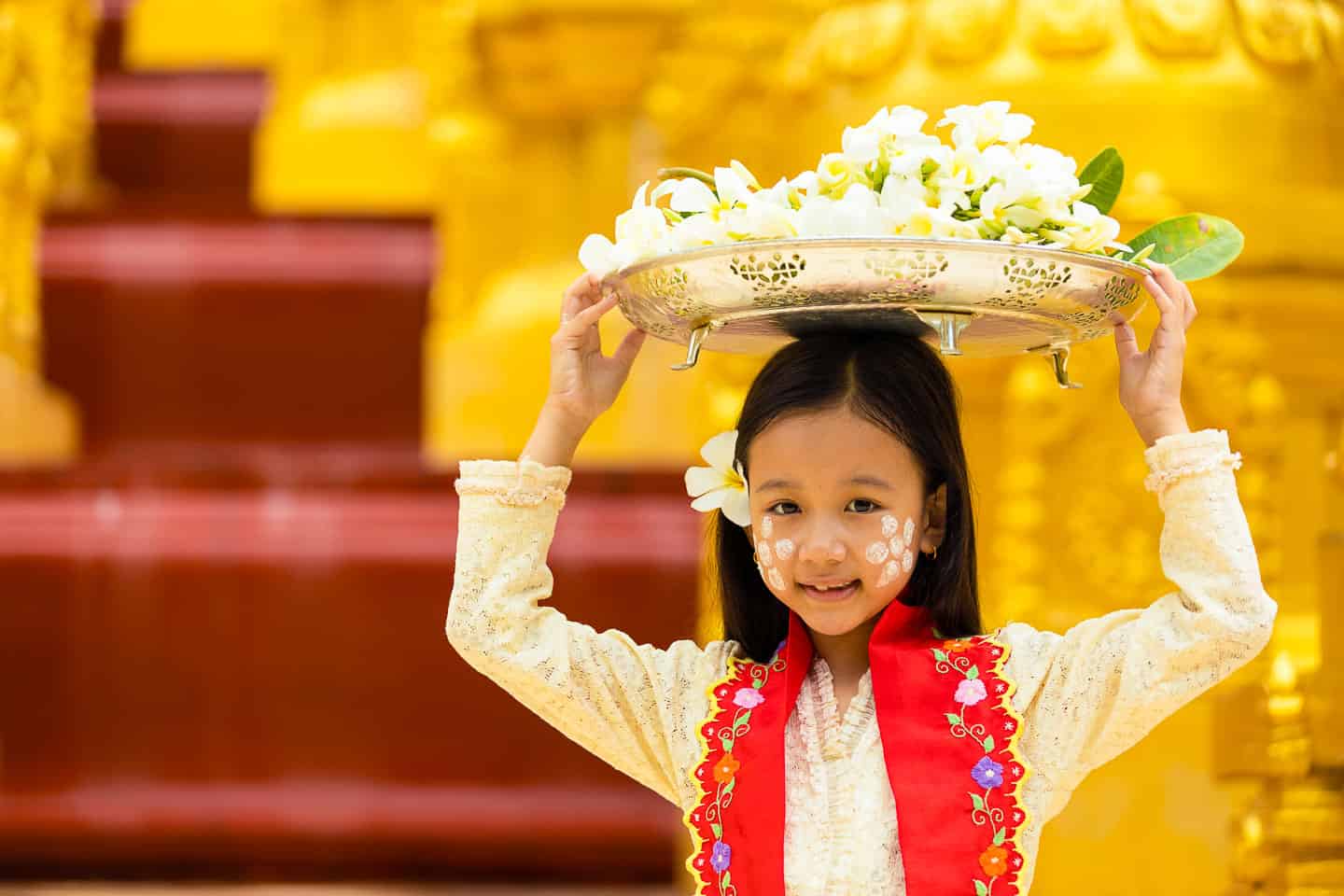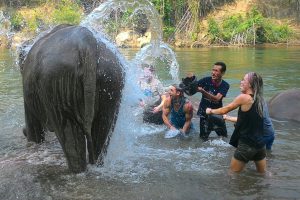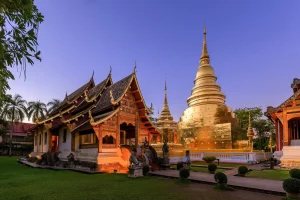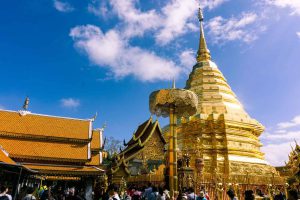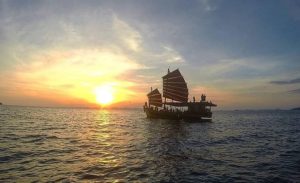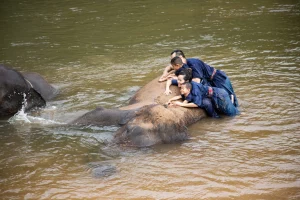Kanchanaburi is a great destination with a diversity of attractions and experiential activities for all generations and interests. It is a province full of history, adventure, remarkable natural wonders, and multi-cultural local experiences. Let’s look closer to various attractions and activities which are still unknown or less known by major visitors to discover more of this province.
Sangkhla Buri & Mon Culture
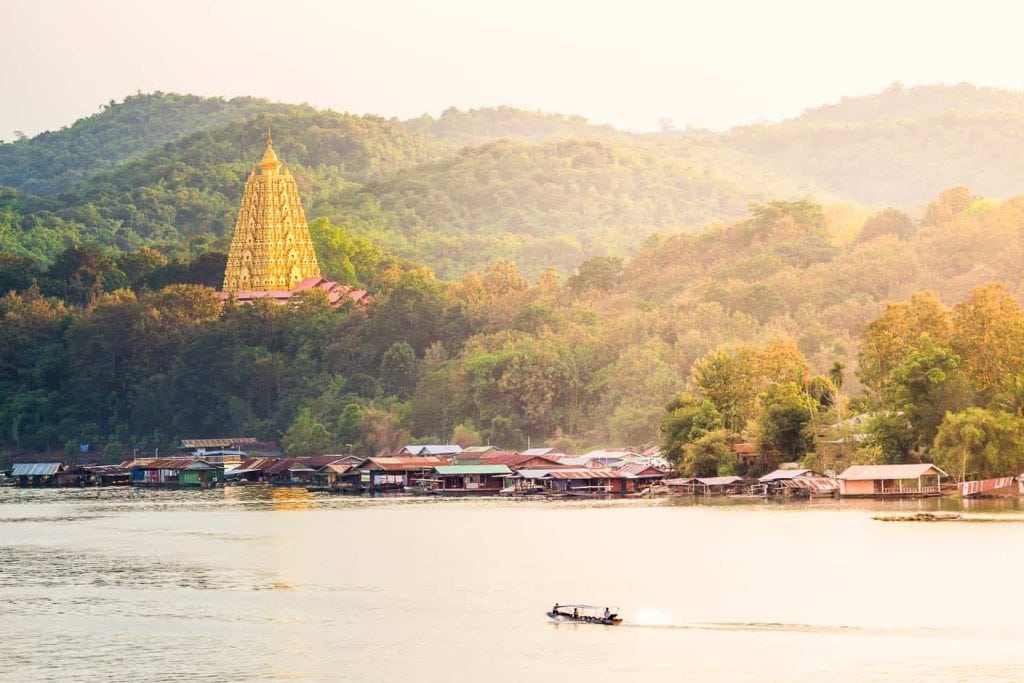
Explore Sangkhlaburi, the land of Mon tribe at the border to Myanmar. This charming small town can be visited in one day from Kanchanaburi by car. The drive is about two hours on the scenic mountainous roads that go along the River Kwai. Mon is an ethnic tribe that originated the Irrawaddy Delta, the Southern border of Myanmar with Thailand. They were believed to be one of the earliest peoples of Indochina and founded the earliest civilization there.
Mon was the first receiver of Theravada Buddhist missionaries from Sri Lanka and adopted Buddhism as their national religion. The majority of them migrated to Thailand in 1661 and 1814 after their rebellions were put down by the Burmese. Mon refugees were granted residence in the central and western Siam including Ratchaburi and Kanchanaburi. Visit Mon temples including Wat Wan Wiwekaram, found by the revered monk and abbot of the temple “Luang Por Uttama” in 1949 and the 850-meter-long bamboo bridge where you can see Mon people making merit by offering food to the monks and children jump down into the river. It is the longest wooden bridge in Thailand and is the second-longest in the world after the Mandalay’s U Bein Bridge in Myanmar. The villagers speak Mon as their first language. Don’t be surprised to see Mon women with “Tanaka” powder on their faces as sun-protection like commonly practiced in Myanmar.

Another interesting attraction is the border market at the Three Pagoda Pass which was the main gateway for Burmese troops to invade Siam in the past. This border point shall be upgraded to the permanent international custom border in the near future. Enjoy observing the busy border market trading wooden handicrafts, dry food, and consumer goods, etc. For slow travelers, there are several small guesthouses around Khao Laem Reservoir with a beautiful lake view to stay and get more insights into the Mon culture and way of life.
Buddhaisawan Thai Sword Fighting School
Swod fighting is one of Thai martial arts besides kickboxing. In Thai history, men and women practiced both for self-defense and protection of the country from invaders. Nowadays kickboxing has become popular worldwide but very few people know about our arts of sword fighting and very few schools teach and train as a sport for the new generations such as the Buddhaisawan Sword Fighting School in Kanchanaburi.
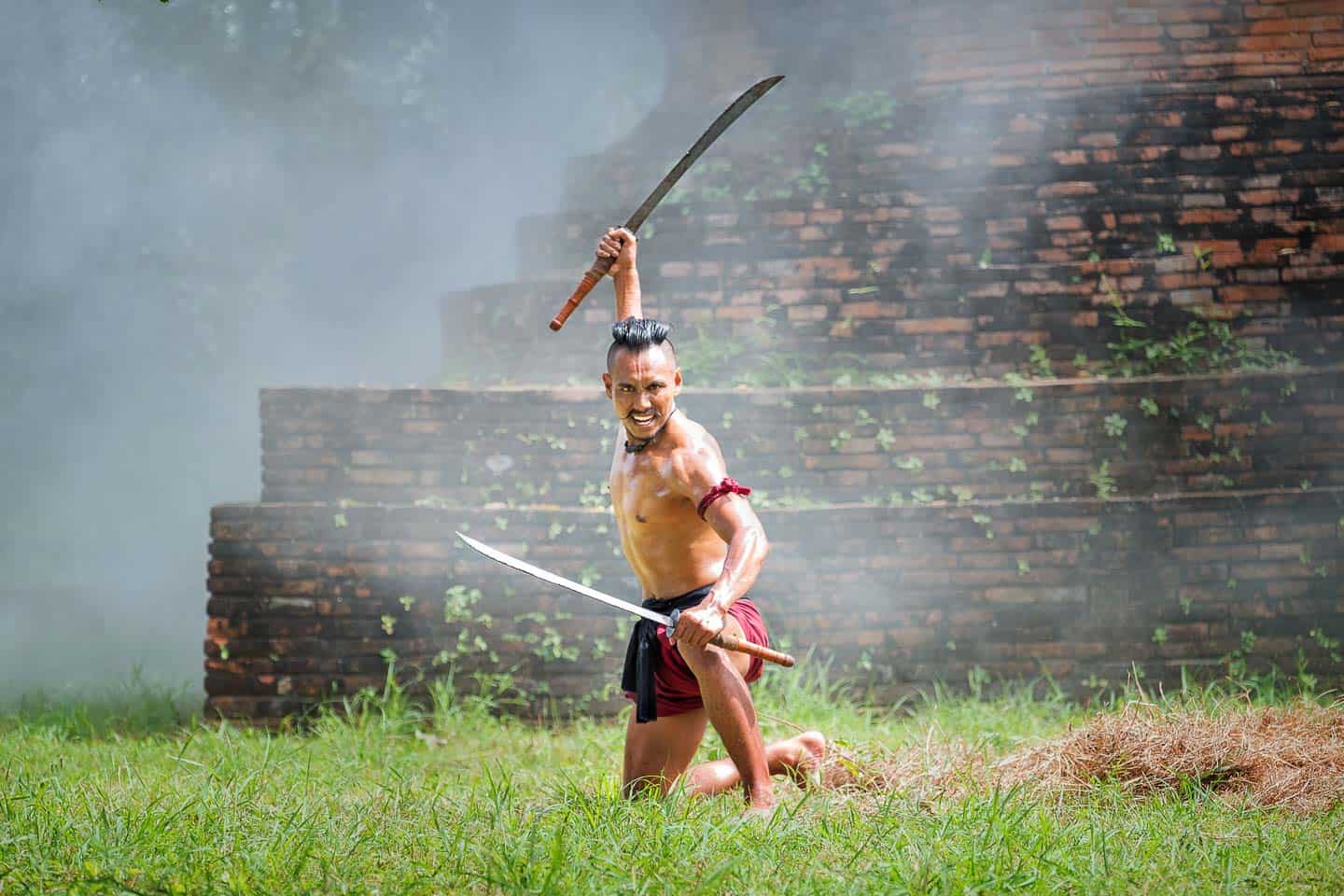
Kanchanaburi was an important location of several wars between Thailand and Myanmar. The last and most important war called “Songkram Kao Tap” when Myanmar sent 9 troops to invade Thailand from North to the South during the establishment of Bangkok in 1785. The biggest troop came to the Three Pagoda Pass with a double number of soldiers more. Myanmar however lost in this war with no return.
The Buddhaisawan Sword Fighting School has been established and famous for Thai kickboxing and martial arts since the Ayuthaya period. It became a part of the triumph in this crucial war. Here are skillful “Kru” or teachers and trainers who inherited the skill and arts of fighting from their ancestors. Although the art of kickboxing is unavailable due to lack of teachers, the arts of fighting with sword and other weapons are open to interested Thais and tourists. You can be pre-arranged as a day trip or multi-day course.
Trekking at Than Lod Caves
Among several caves of Kanchanaburi, the Than Lod Caves are not less beautiful with limestone mountains, waterfalls and lush forests full of giant fishtail palms (Caryota urens), giant sugar palms bamboos and dipterocarps. The caves located in Chaloem Rattanakosin National Park, the smallest park of Kanchanaburi which is about 1.5 hours drive from town.
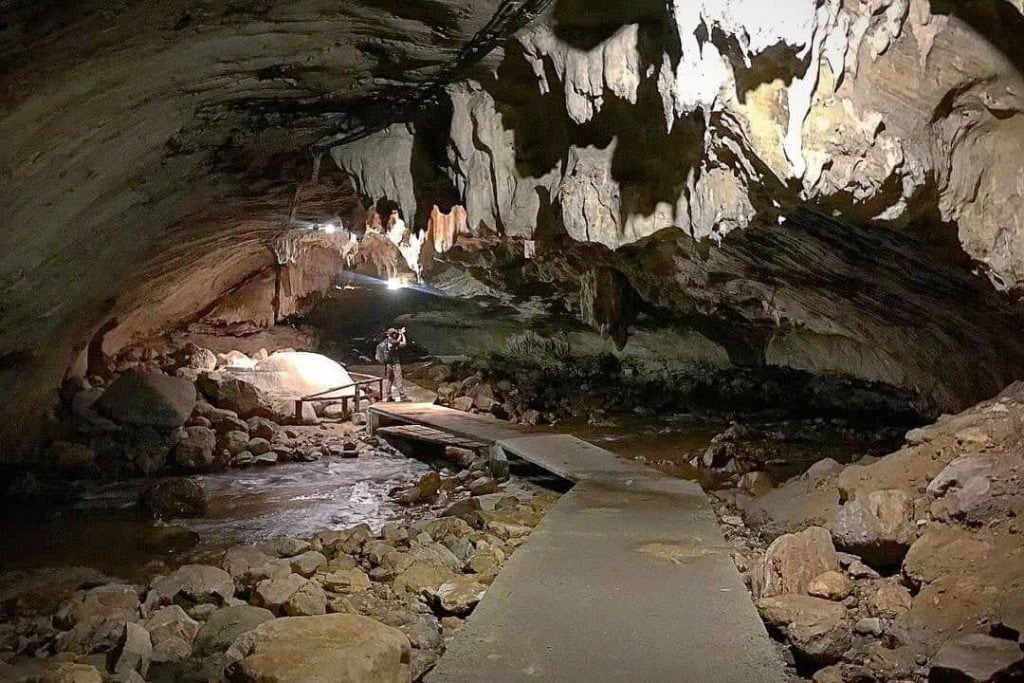
On a 2.5 km trail, there are two caves and 5 levels of the walk. Starting at the smaller Tham Than Lot Noi with 300 m walkway, a small stream runs through the illuminated cave with many beautiful stalactites. You will feel the cool and pleasant breeze along the trail which ends at the forest trail of 2 km which leads to the next big cave, the Tanlod Yai. At level 3 is the Traitrueng waterfall where visitors can take a rest and enjoy the lush natural surroundings. This point is where the most challenging one-kilometer long trail starts with lots of climbing on steep jagged limestones and bamboo stairs to the Tanlod Yai Cave which is a spectacular sinkhole with a natural stone arch over the stream.
At the end of the trail is a temple and monastery offering an alternative route out of the park. The road winds through a bamboo forest and through a small Karen village Khao Lek to the main road. Visitors shall not reach the national park later than 2 pm to allow themselves enough time to climb up to Tanlod Yai cave as the level 3 is closed at 3 pm and the park is closed at 5 pm to allow the wildlife to come down to the waterfall including the protected spicy like the chamois.
Salak Phra Wildlife Sanctuary & Jungle Safari

Wildlife watching and study is one of the new activities offering by Salakpra Wildlife Sanctuary which located nearby the Erawan National Park. Visitors can combine a visit to the Erawan waterfalls in the afternoon by taking a ride with a 4WD jeep into the deep jungle to the wildlife conservation outpost is located. Accompanied by the park ranger, visitors will learn about the story of Salakpra Wildlife Sanctuary and animal behavior from their traces such as footprints, dung and food sources. Wildlife such as elephants, deers, antelopes, guars, etc. could be seen here, especially before sunset time. As a protecting area, visitors have to leave the sanctuary by the latest at 6 pm.
Established in 1965, Salakpra was Thailand’s first wildlife sanctuary, created to protect a rich forest fauna close to Bangkok and the famous River Kwai. Over the years, it has been diminished and abused through official neglect and a growing human population around the area. There were few wild animals other than 130-150 elephants whose forest home is degrading every day at the hands of local people and outsiders exploiting it for free. Due to the construction of Khao Laem Dam, the wild elephants’ food trail has been disrupted and there is not enough food for them in nature.

Nowadays the number of wildlife is significantly increased. About 400 wild elephants roaming in the forest here. The park has to provide enough saltlicks and water ponds during dry months to keep them in nature. Visitors can help shoot grass seeds to the forest which will grow during the rainy season to feed the wildlife and make fire prevention lines in the forest.
There are several student groups visiting Salakpra for educational purposes. Here they can do camping, learn how to survive in the jungle and study wildlife behaviors. To visit the deeper protected zone for wildlife watching with 4X4WD, a pre-appointment has to be arranged, however, it can be also canceled at last minute in case wild elephants are on their way on the trail!
Ban Nong Khao Village
Ban Nongkhao is a Thai village, located about 12 kilometers away from the province. Villagers here still live simply in an agricultural society and old-style houses practicing culture and traditions which has been transmitted from generation to generation. Tourists can experience hands-on activities with the villagers such as rice pounding, cooking typical Thai desserts, growing and harvesting rice, joining tonsuring ceremony, and singing Phleng Yoei, and Phleng Phuang Malai folk songs. The village also offers homestay for visitors who want to get an insight into local life and Thai tradition. Visiting the village will make your visit to Kanchanaburi a memorable experience.

